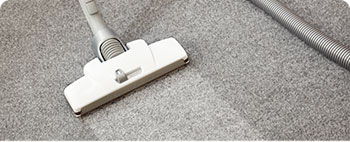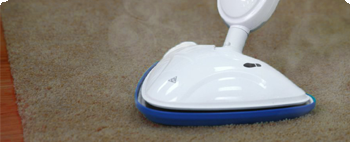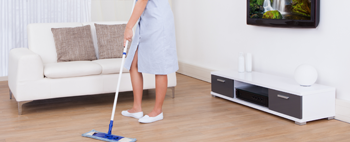Empowering Health and Efficiency through Superior Air Quality
Posted on 28/06/2025
Empowering Health and Efficiency through Superior Air Quality
In today's rapidly changing world, the quality of the air we breathe--both indoors and outdoors--can have a tremendous impact on our health, productivity, and overall well-being. As we spend a significant portion of our daily lives inside homes, offices, and public spaces, it becomes imperative to address superior air quality not merely as a luxury, but as a vital necessity. This article explores the multifaceted ways in which empowering health and efficiency is closely tied to improvements in air quality, offers insightful tips for achieving healthier environments, and delves into the latest trends and technologies driving this crucial movement.

Understanding the Importance of Air Quality
The concept of superior air quality goes far beyond the absence of visible dust or offensive odors. Air contains microscopic particles, various chemical contaminants, and biological agents such as allergens, bacteria, and viruses. When left unaddressed, poor air quality can lead to a wide range of health issues and inhibit our ability to perform at our best--whether at work, home, or school.
Health Impacts of Poor Indoor Air Quality
- Respiratory Issues: Prolonged exposure to pollutants can cause or worsen asthma, bronchitis, and other breathing disorders.
- Allergy Flare-ups: Common household allergens like dust mites, mold spores, and pet dander are key triggers for allergic reactions.
- Long-term Health Risks: Chronic exposure to indoor air pollution has been linked to cardiovascular disease, certain cancers, and cognitive decline.
- Spread of Infectious Diseases: Pathogens can linger and circulate indoors, especially in poorly ventilated spaces.
Thus, empowering your health truly begins with ensuring the air you breathe is fresh, clean, and well-filtered. Superior air quality isn't just preventive; it is transformative--impacting mood, sleep quality, and overall life satisfaction.
Efficiency and Productivity: The Silent Benefits
Beyond the obvious health advantages, superior air quality also has a profound effect on efficiency and cognitive performance. Numerous studies have shown that employees working in environments with improved air quality experience:
- Better Concentration: Fewer airborne toxins mean sharper focus and longer attention spans.
- Lower Absenteeism: Healthy environments reduce the spread of illness, leading to fewer sick days.
- Enhanced Mood: Clean air helps regulate stress hormones and supports emotional well-being.
- Increased Energy Levels: Oxygen-rich environments contribute to higher alertness and vigor throughout the day.
The connection between superior air quality and workplace efficiency underscores that empowering efficiency is not simply a matter of workflow or technology, but of the very air employees breathe every minute of the day.
Components of Superior Air Quality
To achieve superior indoor air quality, it's important to address several key components:
- Ventilation: Proper airflow dilutes indoor pollutants and brings in fresh oxygen.
- Filtration: Advanced filters (like HEPA and activated carbon) capture fine particles, allergens, and even some harmful gases.
- Humidity Control: Maintaining an optimal humidity range (30-50%) helps inhibit mold and dust mite proliferation.
- Source Control: Avoiding or safely storing sources of volatile organic compounds (VOCs) and other contaminants.
- Monitoring: Real-time air quality sensors and monitors provide feedback and help ensure healthy parameters are maintained.
Common Indoor Pollutants
Understanding the pollutants that can degrade indoor air and their sources is the first step in formulating an effective air quality improvement strategy. Common offenders include:
- PM2.5 and PM10: Particulate matter from combustion, dust, and industrial sources
- Formaldehyde: Emitted from pressed wood products, glues, and some furniture finishes
- Radon: A naturally occurring radioactive gas that can seep into buildings from the ground
- Carbon Monoxide: Produced by fuel-burning appliances
- Mold Spores: Thrive in damp environments and can cause respiratory issues
- Pet Dander and Pollen: Biological allergens
- Volatile Organic Compounds (VOCs): Emitted by paints, cleaning products, and personal care items
Strategies for Achieving Superior Air Quality
To truly empower health and efficiency, proactive steps must be taken to elevate air quality in all environments. Here are essential strategies for both residential and commercial spaces:
1. Prioritize Ventilation
Natural and mechanical ventilation systems play a crucial role in dispersing indoor pollutants and bringing in outdoor air. Simple actions like opening windows when weather permits, or using exhaust fans in high-moisture areas (kitchens and bathrooms), can make a significant difference. For larger buildings, optimized HVAC systems with outdoor air intakes ensure continual fresh air exchange.
2. Improve Filtration and Purification
Modern air purifiers equipped with HEPA and activated carbon filters are highly effective at removing fine particles, volatile chemicals, and odors. In homes with allergies or asthma, upgraded furnace filters and stand-alone purifiers can dramatically reduce symptom-triggering contaminants.
3. Maintain Optimal Humidity
Controlling humidity levels between 30% and 50% significantly reduces the risk of mold growth and dust mite activity. Dehumidifiers (in damp environments) and humidifiers (during dry winters) help achieve ideal conditions for superior air quality.
4. Reduce Source Pollution
- Choose low-VOC products for paints, adhesives, and furnishings.
- Store chemicals and fuels away from living spaces.
- Ban indoor smoking and restrict use of candles and incense.
- Avoid overusing air fresheners and cleaning sprays with synthetic fragrances.
5. Regular Maintenance and Cleaning
Routine cleaning (dusting, vacuuming with HEPA filters, laundering bedding) reduces dust accumulation, pet dander, and allergens. Annual HVAC inspections and filter replacements are vital to maintain the integrity of air systems.
6. Invest in Air Quality Monitoring
Smart, real-time air quality monitors provide instant feedback on pollutants such as PM2.5, CO2, VOCs, and humidity. This empowers proactive management and swift interventions if dangerous conditions arise.
The Role of Technology in Advancing Air Quality
The last decade has seen revolutionary advances in air quality management technology. From sophisticated filtration systems to AI-driven quality monitors, innovation is providing powerful tools in the quest to empower health and efficiency.
Smart Air Purifiers and Filtration
Modern air purifiers are more than just filters; they integrate sensors, Wi-Fi connectivity, and feedback apps. Some can automatically adjust fan speeds and alert users if filter replacement is needed. Others use negative ionization or UV-C technology to neutralize bacteria and viruses, making them invaluable in medical and institutional settings.
Data-Driven Air Quality Monitoring
IoT air quality monitors continuously track multiple parameters, offering real-time insights via dashboards accessible on smartphones or computers. In workplaces, this data can be used to automatically adjust HVAC performance and create ideal conditions for peak efficiency and health.
Building Automation Systems
Many modern commercial and institutional buildings now utilize smart automation platforms that control ventilation, temperature, humidity, and lighting based on occupancy and air quality sensors. This not only improves indoor environments but leads to substantial energy savings and a reduced carbon footprint.
The Economic and Societal Benefits of Superior Air Quality
Investing in superior air quality isn't just good for individuals--it has significant benefits for businesses, communities, and entire countries.
- Reduced Healthcare Costs: Fewer respiratory illnesses, allergic reactions, and chronic disease complications translates to reduced medical expenditure.
- Higher Workforce Productivity: Healthier employees contribute more effectively, with less downtime and increased innovation.
- Improved Academic Performance: Better air quality in schools is linked to stronger student concentration, test scores, and attendance rates.
- Enhanced Well-Being and Social Equity: Access to clean air is a fundamental human right, and improvements uplift vulnerable groups who are often disproportionately affected.
Creating Air Quality-Focused Communities
Community action and regulation are key drivers in pushing for widespread improvements in air quality. From city-wide initiatives to reduce vehicular emissions, to public health campaigns about home air quality, collective efforts can bring about substantial, long-lasting change. Modern urban planning increasingly incorporates green spaces, low-emission transportation, and stringent building standards to protect the air for all residents.

Building a Healthier Future: Air Quality and Sustainability
Sustainable building practices and renewable energy adoption go hand-in-hand with achieving superior air quality. Eco-friendly materials, smart design, and clean energy reduce both emissions and long-term operational costs. Renewable solutions (like solar or wind) combined with low-VOC construction materials and enhanced ventilation systems create healthy, efficient spaces that are built to last.
Green Certifications and Standards
International standards such as WELL, LEED, and Fitwel provide guidelines and benchmarks for creating healthier buildings. These certifications not only ensure superior indoor air quality, but also promote water quality, lighting, ergonomic spaces, and community well-being.
Conclusion: The Power of Superior Air Quality
Empowering health and efficiency through superior air quality is no longer an option--it is a necessity for anyone seeking a better quality of life and higher productivity. Whether at home, work, or in public spaces, clean air supports robust physical health, sharp mental acuity, and happier moods. Through visionary technology, smart choices, and proactive community action, everyone can contribute to healthier air and a brighter, more efficient future.
Take action today: Assess your environment, implement effective air quality strategies, and advocate for broader changes in your community. Ultimately, the journey to empower health, efficiency, and sustainability all starts with the simplest, most essential element--the air we breathe.


















